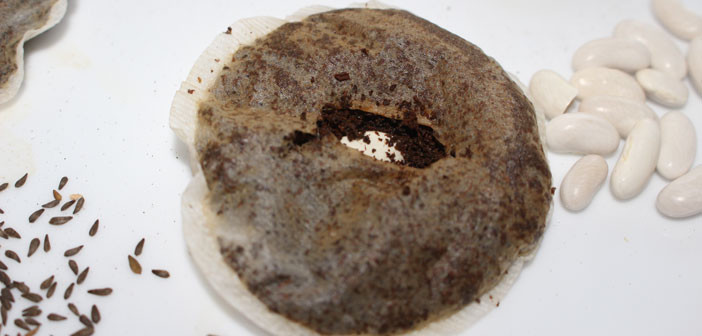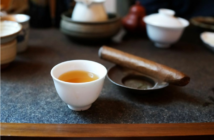Are you envious of your neighbor’s green thumb? Does it seem that everyone else’s plants are flourishing while yours continues to flounder? Well, beautiful plants could be only a cup of tea away.
The nutrients in your used tea leaves can transform your plants from surviving to thriving. Generally, plants need three minerals to survive: nitrogen for stem and foliage growth (keeping your plant healthy and green), phosphorus to give your plants a strong start and build the root system, and potassium for disease resistance. Tea leaves contain approximately 4.4% nitrogen, 0.24% phosphorus and 0.25% potassium. In addition, they are loaded with antioxidants, fluoride, and vitamins. But can these nutrients be absorbed by our garden? Absolutely.
Not to be mistaken for compost tea, which is a mixture of compost added to water then sprayed on plants, used tea leaves are a fantastic supplement for your plants. The wonderful thing about tea leaves is that they are easy to use, toxic free, and for tea drinkers they are readily available.
Tea Leaves Can:
• Help retain moisture (adding a nutrient rich base into your soil).
• Keep away weeds.
• Increase overall oxygen in the soil, encouraging both natural aeration and strong root growth.
• Lower the ph in your soil. Tea is naturally acidic. This makes tea leaves a great enhancement for acid loving plants, helping blueberries flourish, tomatoes thrive, and bringing the blue into your hydrangea.
• Caffeine content may help ward off slugs and other pests.
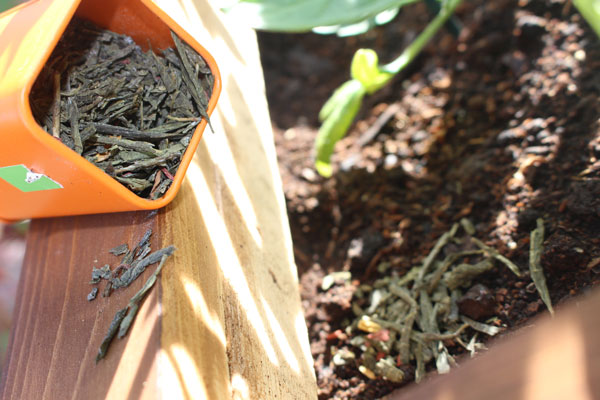 Commonly known as chagra, dried tea leaves are a great way to give your plants an extra boost. It is important to remove all the moisture as damp tea leaves could cause fungus to grow in the soil, creating an unhealthy environment for your plants.
Commonly known as chagra, dried tea leaves are a great way to give your plants an extra boost. It is important to remove all the moisture as damp tea leaves could cause fungus to grow in the soil, creating an unhealthy environment for your plants.
The tea leaves can be dried either using the warm summer sun or on a cookie sheet in the oven. Gently mix the chagra in the top layer of soil, water your plants and wait to reap the benefits.
Start your Seeds in Tea Bags
Did you know that a tea bag full of tea contains enough nutrients to sprout seeds? Try growing lettuce, tomato, marigold or even viola in your own tea bag garden. The seeds thrive in this nutrient-rich environment benefiting from the minerals in the tea leaves.

Plant your own Tea Bag Garden:
1) Dampen 100% biodegradable tea bags (paper, muslin or silk) with the tea still in them
2) Layer the bags on a wet paper towel
3) Cut a small slit in each bag, being careful not to spill the tea that’s inside
4) Plant one seed directly inside the tea in each bag
5) Place your tea garden in full sun
6) Keep the tea bags moist until the plants have spouted
7) Once sprouted, plant the tea bags (with seedling intact) directly in soil
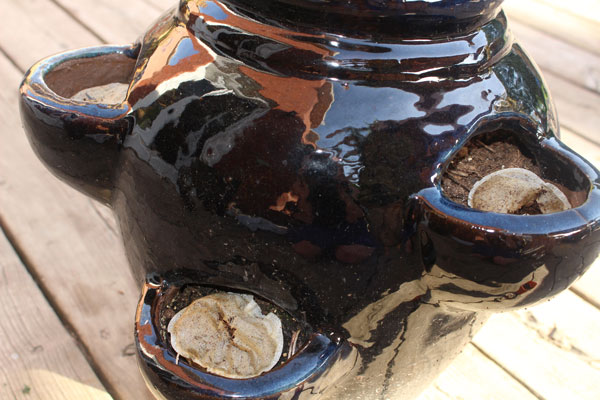
Tea Leaves and Compost: The Perfect Garden Enhancement
Perhaps the best way to utilize your used tea leaves for gardening is by placing them directly in your home composter. Tea leaves help to accelerate the decomposition process in compost, creating a nutrient-rich base which will help all of your plants grow. In addition, tea leaves are loaded with nitrogen, a mineral that will encourage bright green foliage.
1) Add moist tea leaves (or tea bags) to your compost bin.
2) If adding the bags to the compost, make sure they are 100% biodegradable: look for tea bags made of paper, silk or muslin. Polypropylene (corn based bags) will not decompose.
3) If you’re not sure if the tea bags are 100% biodegradable, remove the leaves from the bag and place them directly in the compost. Discard the bags.
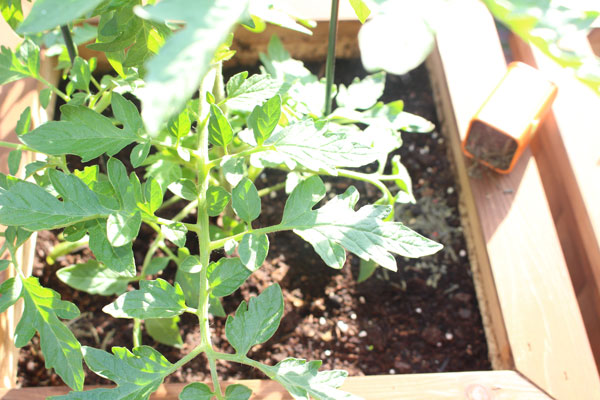
Stop throwing out your tea and give your garden the boost it craves. Whether green, white, black or oolong, all are jam-packed with nutrients your plants will love. For the optimal health of your garden, rotate the leaves both indoors and out giving each plant its own cup of tea. Enjoy watching your garden grow.

